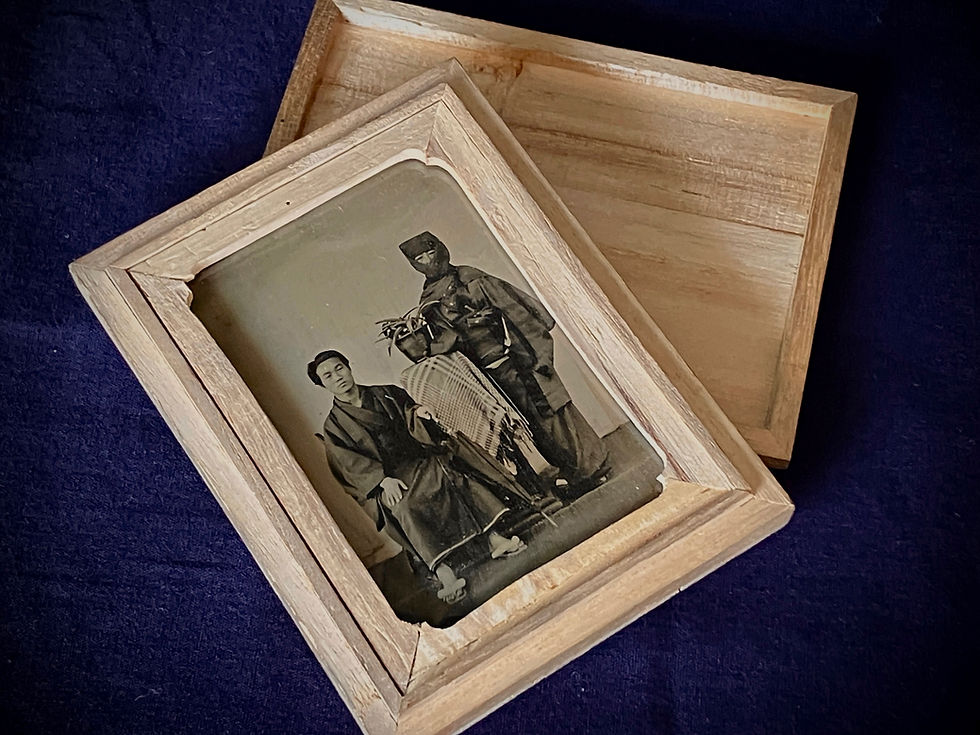A Silver Image That Emerges with Light
- esfahanchaihane
- Oct 5
- 2 min read

When people see an ambrotype or tintype for the first time, many might think,"Hmm, this photo looks a bit dark."
It’s true—these wet plate photographs never appear pure white, even in their brightest areas. As a result, the range of tones—from shadows to highlights, also called dynamic range—is narrower than in typical printed photographs.
Let’s take a closer look.
The two images below show the same tintype on the left and a print on the right, photographed under different lighting conditions.

The first image (above) was taken under normal indoor lighting. The tintype appears slightly dark, while the print shows clear contrast from white to black.

The second image shows the same two photos by a bright window with natural light. The tintype suddenly comes alive, and its tonal range—from dark to light—is fully revealed. The print also brightens, but the darkest areas lighten along with the rest, giving it a somewhat washed-out look. In other words, the tonal range of prints is fixed, and the impression of the image does not change much with the light.
Printed photographs do not change no matter the lighting. A dark photo may appear brighter under strong light, but its tonal range never expands.
Wet plate photographs are different. Their appearance responds to the light that falls upon them, revealing depth and subtle details. Under strong light, this effect becomes even more striking. The metallic silver reflects the light, and mid-tones and highlights that were previously hidden suddenly emerge. Shadows and details that seemed subdued now reveal depth and expression.
The Fascinating Tones Created by Silver

Wet plate photographs form their tones through tiny particles of metallic silver.
When you think of silver, you might imagine the sparkle of silverware or jewelry. That mirror-like shine comes from atoms arranged perfectly to reflect light in a uniform direction. Wet plate silver is different: the particles are irregularly clustered, forming an image. This is why the image does not appear shiny under everyday light.
However, under the right light, these silver particles do reflect, revealing the full tonal range of the image.
Many wet plate photographs you see online have been carefully adjusted during shooting or scanning. Their tones from highlights to shadows are often enhanced so that everything is clearly visible.
For this reason, it is difficult to convey the experience of actually holding a wet plate and seeing the image “come alive” in the light. Wet plate photographs change their expression depending on the light. Rather than saying they “look different in different lighting,” it is more accurate to say that the image emerges with the light.
This mysterious effect cannot be experienced on a screen—it is only truly felt when you hold the physical photograph in your hands.
湿板写真の技法について → 湿板写真とは
湿板についてもっと知る → 湿板Journal(blog)
実際の作品を見る → ギャラリー
撮影や体験をしてみたい → 料金/ワークショップ



